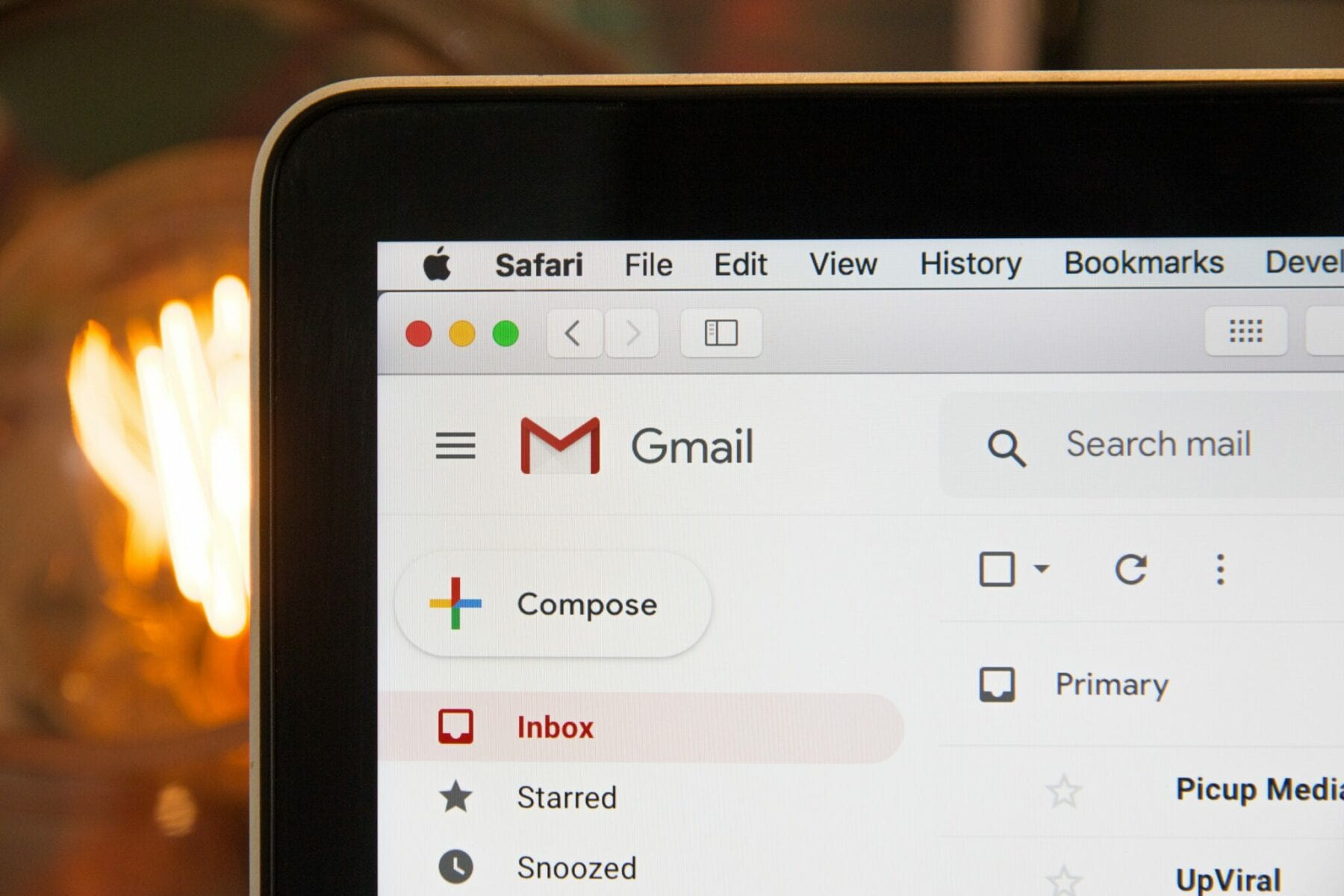Your nonprofit has stories to tell and emails can spread the word. The digital nature of email offers countless possibilities — especially with times as they are and people interacting more online than in-person.
From donor retention to virtual fundraisers to event participation and more, email marketing campaigns can keep people informed on what your organization is doing. Would you like to see better donor email open rates? With a process in place, your messages will come together more easily and be more effective.
Email marketing campaigns can enable your nonprofit to achieve its mission and realize its vision. An active effort to improve your email outreach can be part of your organization’s capacity building work.
Email marketing can help your nonprofit. The return on investment for emails is noteworthy. Email is one of the most cost-effective marketing tools. Compared to other marketing initiatives, emails are relatively inexpensive to send and produce.
Plan Your Emails
With the right digital marketing strategy in place, your organization can save time and money on your promotions. Create a plan that works in tandem with your other communications.
Before you start an email campaign, determine what you are trying to accomplish and develop content that will achieve your objectives. Do you have news to share about your nonprofit’s achievements in the community—maybe something about how you’ve changed the way you do things during COVID-19? Are you planning a gala fundraiser? Is it time to reach out and say thank you to your generous supporters? Determine what your goals are and what you want to achieve.
Track Email Campaigns
Organize a spreadsheet to list details about the emails you’re sending. Include your objective or goal, a name for the campaign, the send date for the email, identify who the recipients should be, and track data. Note how many emails were delivered, opened, and clicked through to your website or social media. Analytics will show what is working and where improvements can be made.
Keep in mind that people view most emails through mobile devices rather than laptops. The amount of space you have to work with is limited and attention spans are short. Craft messaging to fit the specific needs and wants of your recipients.
An email appears deceptively plain. A great subject line is only the beginning to a successful email campaign. While there are many factors to keep in mind, a few tips and tricks can make a big difference. Get your emails going with these 9 helpful hints:
The Donor Email Open Rate Cheat Sheet
- Manage your subscriber list. An email campaign is only as good as the quality of its subscriber list. Refresh your subscriber list by eliminating inactive email addresses. Make sure your parameters are set to require a double opt-in before subscribers can join your list. In a double opt-in, a potential new subscriber must consent to share an email address with you and then send a separate confirmation back to you. This ensures only people who want to be on your email list are actually added. Over time, this process will reduce the number of un-subscribers and spam reports associated with your email account.
- Write a perfect subject line. Come up with something that will delight the recipient. Appealing subject lines will boost your email open rates. Every word counts. Below are cheat sheets for word choices and subject line do’s and don’ts.
- Within the email offer compelling content. Leverage copy, graphics, videos and links so recipients take notice. Once you have their attention, keep them engaged long enough to get them to do what you want (conversion). Get personal and include the recipient’s first name in the subject line. Email personalization improves open rates.
- Use a sender name that builds trust and reflects your nonprofit brand. Usually this will be the organization’s name. For an added boost, also include a real person’s name in the send name, preferably an executive director or other high-profile person within the nonprofit. “Sue Smith, The Food Shelf” is an example of a sender name using both a person and organization. Subscribers will want to know what Sue is saying.
- Build your email properly. An email service provider (EMS) can help ensure things are set up correctly on the back end. Note: Some EMS offer discounts for nonprofits. Ask about discounts before you commit your organization to an EMS.
- Make unsubscribing easy. Provide your subscribers with a straightforward option to unsubscribe from your email list. It’s a legal requirement to have a clear opt-out included in all commercial email sends.
- Always do a test send to yourself and other stakeholders within your nonprofit before sending the email to anyone else. Check spelling, names, dates, links, image quality, etc. Correct any discrepancies before sending the message to an external audience. Better yet, include a second step. Do A/B testing to optimize your messaging. In A/B testing, two messages which differ by just one element deliver to random samplings of recipients. The messages may vary in their subject line, time or day of delivery, content, artwork or other factors. After the emails are delivered, analytics will evaluate each message. The one that gets the highest marks would be the one to send to the remainder of the list.
- Deploy the email to the full list or consider segmentation. Rather than just sending to your full list, you can use segmentation to better target your emails. A list can be segmented through filters to more specifically define the attributes for a smaller number of recipients. Segmenting adds value because it leverages the like characteristics of a certain group, such as donors, active volunteers, event supporters, etc. A different message could go to each segmented group.
- Evaluate the outcome. After your email has delivered, carefully review the analytics. Also, get feedback from stakeholders at your nonprofit. Did the email accomplish what you wanted? Be sure to share successes with your team!
Writing Subject Lines
It might seem like a little thing, but a lot of thought goes into writing a great subject line. The creative process takes time to achieve its full fruition. The subject line should reflect the content inside the email. The key is to offer something the recipient will find compelling. The more you know about the people on your list, the more you can tailor your messaging. The aim is two-fold. First, to make the subject line enticing enough that the recipient takes notice and secondly, to have the recipient want to open the email to learn more. Most emails don’t get to this point. But if you take best practices into account, your email open rates will be higher.
Every character counts when it comes to emails. This is a time to be brief yet meaningful. Aim to be clear and concise. A simple approach will make your message more understandable to the recipient. Add a dash of apt humor to heighten interest. Other ways to get people to pay attention are to convey a sense of urgency and have a call to action. Copy that combines a compelling tone with an original message garners the best results.
How To Write Subject Lines
While there is no universal solution for writing the perfect subject line, following a few guidelines can help. Take a look at some “do’s” and “dont’s” for email subject lines.
Do:
- Keep it short: 50 characters or less, or around 7 words.
- Begin with action words.
- Ask a question: Have You Joined Our _____________?
- Use numbers or lists: 2021.
- Include the recipient’s first name: Joe, Have You Heard About…
Don’t:
- Include sales pitches.
- Use spam words: They can land your email in spam trap folders before your recipients ever have a chance to see them. Over time, if too many emails are labeled as spam it hurts the integrity of the email address sender name, and the next email send is more likely to end up as spam.
- Play around with fonts: ALL CAPS, colored fonts, changing font size, over punctuating !!! —(this makes your subject line look more like a scream than a statement.)
- Just hit send. Do an internal test of your email first. Make sure everything is perfect.
Words For Email Subject Lines
Good words for email subject lines show action, promote engagement, and convey power. Your subscribers like to see fresh wording that chimes into the feeling of your organization or current events and the time of year. Here’s a list to get you started.
- About
- Better
- Can
- Change
- Event
- FWD
- Help
- Introducing
- Invitation
- Join
- Month Names: January, February…
- New, News
- RE
- Really
- Special
- Thanks
- Update
- You, Your
Poorly-performing words tend to be dull, sales related or over-used cliches. Avoid using these words in your email subject lines:
- #1, 100%, Million, Billion
- Act Now
- Action
- Amazing
- Buy
- Call, Call Now
- Click Here, Click Below
- Do It Today, Don’t Delay
- Free, Free Gift, Free Info, Free Membership
- Friend, Dear Friend
- Get, Get Started
- Giving Away
- Information You Requested
- Limited Time
- Only
- Opportunity
- Please Read
- Take Action Now, Urgent
- This Isn’t Spam
- What Are You Waiting For
- Visit Our Website
Email Marketing For Nonprofits
Emails are a good digital marketing solution. Well-planned campaigns with clearly defined goals, targeted messaging, customized creative elements and measured outcomes are the most likely to succeed. Mastering the subject line is a big step in the process. With careful planning, you can get the email open rates you’re looking for. So, do some research, fine-tune your list, plan a campaign, create killer content, set it all up and test everything. Now you’re ready to hit send!





